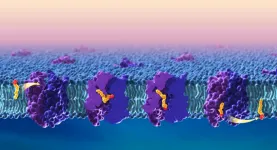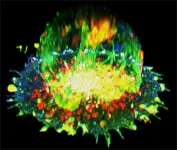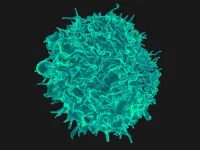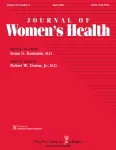(Press-News.org) Researchers at the UCLA David Geffen School of Medicine, the Howard Hughes Medical Institute at UCLA and the National Institutes of Health have developed a zebrafish model that provides new insight into how the brain acquires essential omega-3 fatty acids, including docosahexaenoic acid (DHA) and linolenic acid (ALA). Their findings, published in Nature Communications, have the potential to improve understanding of lipid transport across the blood-brain barrier and of disruptions in this process that can lead to birth defects or neurological conditions. The model may also enable researchers to design drug molecules that are capable of directly reaching the brain.
Omega-3 fatty acids are considered essential because the body cannot make them and must obtain them through foods, such as fish, nuts and seeds. DHA levels are especially high in the brain and important for a healthy nervous system. Infants obtain DHA from breastmilk or formula, and deficiencies of this fatty acid have been linked to problems with learning and memory. To get to the brain, omega-3 fatty acids must pass through the blood-brain barrier via the lipid transporter Mfsd2a, which is essential for normal brain development. Despite its importance, scientists did not know precisely how Mfsd2a transports DHA and other omega-3 fatty acids.
In the study, the research team provides images of the structure of zebrafish Mfsd2a, which is similar to its human counterpart. The snapshots are the first to detail precisely how fatty acids move across the cell membrane. The study team also identified three compartments in Mfsd2a that suggest distinct steps required to move and flip fatty acids through the transporter, as opposed to movement through a linear tunnel or along the surface of the protein complex. The findings provide key information on how Mfsd2a transports omega-3 fatty acids into the brain and may enable researchers to optimize drug delivery via this route. The study also provides foundational knowledge on how other members of this transporter family, called the major facilitator superfamily (MFS), regulate important cellular functions.
The study was led by Tamir Gonen, Ph.D., of UCLA and Doreen Matthies, Ph.D., of NIH’s Eunice Kennedy Shriver National Institute of Child Health and Human Development (NICHD). Additional funding for the study was provided by NIH’s National Institute of General Medical Sciences (NIGMS) and the Howard Hughes Medical Institute.
Article: Nguyen C., Lei H.-T., Lai L.T.F., et. al. Lipid flipping in the omega-3 fatty-acid transporter. Nature Communications DOI: 10.1038/s41467-023-37702-7
END
Researchers develop model for how the brain acquires essential omega-3 fatty acids
Findings may aid design of targeted drug delivery into the brain and central nervous system
2023-05-08
ELSE PRESS RELEASES FROM THIS DATE:
T cells can activate themselves to fight tumors
2023-05-08
When you need a bit of motivation, it often has to come from within. New research suggests cancer-fighting immune cells have found a way to do just that.
Scientists at University of California San Diego have discovered a property of T cells that could inspire new anti-tumor therapeutics. Through a previously undescribed form of cell auto-signaling, T cells were shown to activate themselves in peripheral tissues, fueling their ability to attack tumors.
The study, published May 8, 2023 in Immunity, was led by study first author and postdoctoral fellow Yunlong Zhao, PhD, and co-senior authors Enfu Hui, PhD, professor in the School of Biological Sciences at UC ...
First observational evidence of beaufort gyre stabilization, which could be precursor to huge freshwater release
2023-05-08
Woods Hole, Mass. (Monday, May 8, 2023) - A new study provides the first observational evidence of the stabilization of the anti-cyclonic Beaufort Gyre, which is the dominant circulation of the Canada Basin and the largest freshwater reservoir in the Arctic Ocean.
The study uses a newly extended record of “dynamic ocean topography” satellite data from 2011-2019 provided by two of the co-authors, along with an extensive hydrographic dataset from 2003-2019, to quantify the changing sea surface height ...
Beyond necessity, hearing aids bring enjoyment through music #ASA184
2023-05-08
CHICAGO, May 8, 2023 – For decades, hearing aids have been focused on improving communication by separating speech from background noise. While the technology has made strides in terms of speech, it is still subpar when it comes to music.
In their talk, “Evaluating the efficacy of music programs in hearing aids,” Emily Sandgren and Joshua Alexander of Purdue University will describe experiments to determine the best hearing aids for listening to music. The presentation will take place Monday, May 8, at 11:45 a.m. Eastern U.S. in the Indiana/Iowa room, as part of the 184th Meeting ...
Women are underrepresented in cardiovascular clinical trials
2023-05-08
A new study has shown that women are underrepresented in late-breaking cardiovascular clinical trials (LBCT) presented at national meetings. The study is published in the peer-reviewed Journal of Women’s Health. Click here to read the article now.
LBCT can have an impact on novel drug and device approvals, intervention indications, and patient management, according to Martha Gulati, MD, MS, from Smidt Heart Institute, and coauthors of the current study. The study investigators assessed the inclusion of women participants in LBCT presented at recent American ...
Veterans Affairs healthcare is as good as non-VA care for many operations
2023-05-08
Key takeaways
Quality and safety: The quality and safety of care across surgical specialties at VA healthcare sites is as good as, or better than, non-VA health centers on several quality measures.
Cost and efficiency: When looking at several studies that assessed differences in cost and efficiency, non-VA medical centers performed better than VA centers.
CHICAGO: By most measures, surgical care provided to United States military veterans in Veterans Affairs (VA) centers across the country is as good as, or better than, the same care delivered at non-VA medical centers, according to a new ...
National trends in pediatric deaths from fentanyl
2023-05-08
About The Study: Mirroring trends seen among adults, pediatric deaths from fentanyl began to increase substantially in 2013, resulting in a more than 30-fold increase in mortality between 2013 and 2021. A surge that began in 2018 has led to a nearly 3-fold increase in deaths among older adolescents and a nearly 6-fold increase among children younger than 5 years. Across age groups, annual deaths peaked in 2020 and 2021, suggesting that the COVID-19 pandemic exacerbated this public health crisis.
Authors: Julie R. Gaither, Ph.D., M.P.H., R.N., of the Yale School of Medicine in New Haven, Connecticut, ...
Ransomware attack associated with disruptions at adjacent emergency departments
2023-05-08
About The Study: This study found that hospitals adjacent to health care delivery organizations affected by ransomware attacks may see increases in patient census and may experience resource constraints affecting time-sensitive care for conditions such as acute stroke. These findings suggest that targeted hospital cyberattacks may be associated with disruptions of health care delivery at nontargeted hospitals within a community and should be considered a regional disaster.
Authors: Christian Dameff, M.D., M.S., of the University of California, San Diego, is the corresponding author.
To access the embargoed study: Visit our For The Media website at this link ...
Air pollution from oil and gas production responsible for $77 billion in annual US health damages, contributes to thousands of early deaths, childhood asthma cases nationwide
2023-05-08
These health impacts affected communities in states with high oil and gas production, as well as states with limited or no gas activity, underlining the need for comprehensive regulatory action to protect Americans from the pollutants generated by this sector.
Despite global efforts to transition from fossil fuels to clean energy, oil and gas (O&G) production is nearing record levels in the United States, posing concern among health experts about what this O&G growth means for air quality and human health. While ...
A sharp increase in the price of the gout drug colchicine led to lower use and poorer disease control, UCLA research suggests
2023-05-08
FINDINGS
Due to a policy decision in 2010 by the U.S. Food and Drug Administration (FDA), the price of a prescription for the therapeutic gout drug colchicine increased nearly 16-fold from $11.25 in 2009 to $190.49 in 2011. Out-of-pocket costs for patients who took the drug jumped more than four-fold from $7.37 to $39.49 over the same period. Use of colchicine dropped 17% during this time and 27% over the following decade. Patients turned to alternative medications for gout such as allopurinol and corticosteroids. However, disease ...
An unprecedented view of gene regulation
2023-05-08
CAMBRIDGE, MA -- Much of the human genome is made of regulatory regions that control which genes are expressed at a given time within a cell. Those regulatory elements can be located near a target gene or up to 2 million base pairs away from the target.
To enable those interactions, the genome loops itself in a 3D structure that brings distant regions close together. Using a new technique, MIT researchers have shown that they can map these interactions with 100 times higher resolution than has previously been possible.
“Using this method, we generate the highest-resolution maps of the 3D genome that have ever been generated, and what we see are a lot of interactions between ...
LAST 30 PRESS RELEASES:
Making lighter work of calculating fluid and heat flow
Normalizing blood sugar can halve heart attack risk
Lowering blood sugar cuts heart attack risk in people with prediabetes
Study links genetic variants to risk of blinding eye disease in premature infants
Non-opioid ‘pain sponge’ therapy halts cartilage degeneration and relieves chronic pain
AI can pick up cultural values by mimicking how kids learn
China’s ecological redlines offer fast track to 30 x 30 global conservation goal
Invisible indoor threats: emerging household contaminants and their growing risks to human health
Adding antibody treatment to chemo boosts outcomes for children with rare cancer
Germline pathogenic variants among women without a history of breast cancer
Tanning beds triple melanoma risk, potentially causing broad DNA damage
Unique bond identified as key to viral infection speed
Indoor tanning makes youthful skin much older on a genetic level
Mouse model sheds new light on the causes and potential solutions to human GI problems linked to muscular dystrophy
The Journal of Nuclear Medicine ahead-of-print tip sheet: December 12, 2025
Smarter tools for peering into the microscopic world
Applications open for funding to conduct research in the Kinsey Institute archives
Global measure underestimates the severity of food insecurity
Child survivors of critical illness are missing out on timely follow up care
Risk-based vs annual breast cancer screening / the WISDOM randomized clinical trial
University of Toronto launches Electric Vehicle Innovation Ontario to accelerate advanced EV technologies and build Canada’s innovation advantage
Early relapse predicts poor outcomes in aggressive blood cancer
American College of Lifestyle Medicine applauds two CMS models aligned with lifestyle medicine practice and reimbursement
Clinical trial finds cannabis use not a barrier to quitting nicotine vaping
Supplemental nutrition assistance program policies and food insecurity
Switching immune cells to “night mode” could limit damage after a heart attack, study suggests
URI-based Global RIghts Project report spotlights continued troubling trends in worldwide inhumane treatment
Neutrophils are less aggressive at night, explaining why nighttime heart attacks cause less damage than daytime events
Menopausal hormone therapy may not pose breast cancer risk for women with BRCA mutations
Mobile health tool may improve quality of life for adolescent and young adult breast cancer survivors
[Press-News.org] Researchers develop model for how the brain acquires essential omega-3 fatty acidsFindings may aid design of targeted drug delivery into the brain and central nervous system






